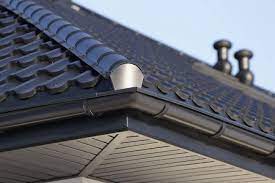rain gutter roll forming machine
Rain Gutter Roll Forming Machine A Comprehensive Overview
In the world of construction and building maintenance, efficiency and quality are paramount. The rain gutter roll forming machine is an innovative tool that plays a crucial role in producing seamless and high-quality gutters, a vital component for effective rainwater management. This machine is designed to automate the process of creating gutters that protect buildings from water damage and erosion, making it an essential piece of equipment for manufacturers in the construction industry.
What is a Rain Gutter Roll Forming Machine?
A rain gutter roll forming machine is a specialized piece of machinery that transforms metal coils into finished rainwater gutters. The process involves feeding metal sheets, typically made from galvanized steel or aluminum, through a series of forming stations. Each station progressively shapes the metal into the desired gutter profile by bending and rolling it. The result is a continuous length of gutter that can be cut to specific lengths according to the requirements of the project.
How It Works
The working mechanism of a rain gutter roll forming machine involves several key components
1. Uncoiler This is where the metal coil is loaded and unwound. The uncoiler ensures a steady and continuous feed of the metal to the forming machine.
2. Roll Forming Stations These are the main stations where the metal is shaped. Each station consists of rollers that incrementally bend the metal into the desired profile. The number of stations can vary depending on the complexity of the gutter design.
3. Cutting Device Once the gutter reaches the desired length, it is cut using a hydraulic or mechanical cutting mechanism. This ensures clean edges and precise lengths.
rain gutter roll forming machine

Benefits of Using a Roll Forming Machine
1. High Efficiency One of the most significant advantages of a rain gutter roll forming machine is its efficiency. The automation of the production process significantly reduces labor costs and time, allowing manufacturers to produce large quantities of gutters quickly.
2. Consistency and Quality Since the gutters are formed using precision machinery, the quality is highly consistent. This reduces the margin for error and ensures that every gutter meets the required specifications.
3. Customizability Roll forming machines can be customized to produce various gutter profiles to meet different design preferences and building codes. This flexibility allows manufacturers to cater to a wide range of client needs.
4. Minimized Waste The roll forming process is designed to utilize materials effectively, thus minimizing waste. The efficient use of metal coils translates to better resource management and lower material costs.
5. Durability Gutters produced by roll forming machines are typically made from durable materials like galvanized steel or aluminum, providing longevity and resistance to environmental factors such as rust and corrosion.
Applications of Rain Gutter Roll Forming Machines
The applications of rain gutter roll forming machines extend beyond residential buildings. They are used in various settings, including commercial and industrial buildings, where effective water drainage is crucial. Furthermore, their ability to produce custom profiles makes them ideal for heritage restoration projects where specific architectural styles must be maintained.
Conclusion
The rain gutter roll forming machine serves as a vital asset in the construction industry, enabling manufacturers to produce high-quality, efficient, and customizable gutters that are essential for effective rainwater management. As technology continues to evolve, these machines are becoming more sophisticated, further enhancing their efficiency and output. By investing in a rain gutter roll forming machine, manufacturers can not only improve their production capabilities but also contribute to the sustainability and resilience of the buildings they serve.
-
Roof Panel Machines: Buying Guide, Types, and PricingNewsJul.04, 2025
-
Purlin Machines: Types, Features, and Pricing GuideNewsJul.04, 2025
-
Metal Embossing Machines: Types, Applications, and Buying GuideNewsJul.04, 2025
-
Gutter Machines: Features, Types, and Cost BreakdownNewsJul.04, 2025
-
Cut to Length Line: Overview, Equipment, and Buying GuideNewsJul.04, 2025
-
Auto Stacker: Features, Applications, and Cost BreakdownNewsJul.04, 2025
-
Top Drywall Profile Machine Models for SaleNewsJun.05, 2025








